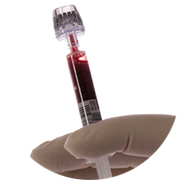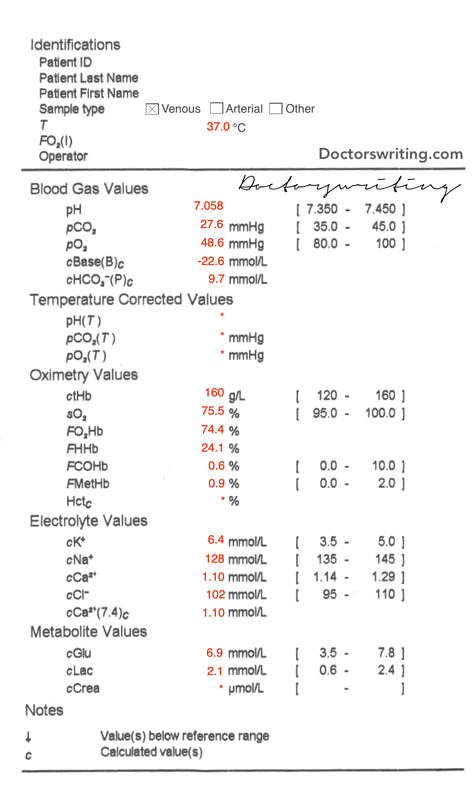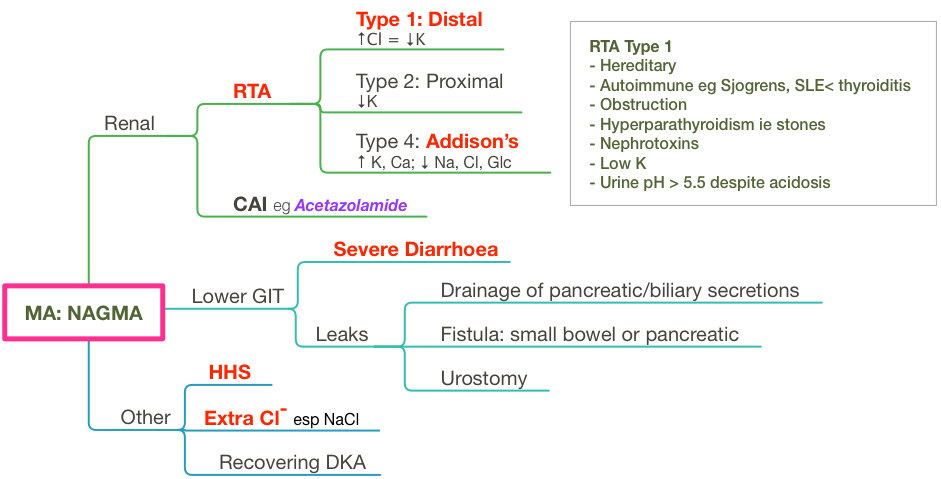Cause of acidosis?
- CO2 = 27.6 ∴ primary metabolic acidosis
Is there appropriate respiratory compensation or a concomitant process?
- Expected CO2 = 1.5 x HCO3 + 8 = 22.55
- Actual CO2 = 27.6 ∴ concomitant mild respiratory acidosis
What is the cause of the metabolic acidosis?
- Anion Gap = 128 - 102 - 9.7 = 16.3 = NAGMA (well...normal is 12 +/- 4 🤷♂️)
If you want to be pedantic and call it a HAGMA - then we can check if there is another concomitant metabolic process:
- Delta Ratio = (16.3 - 12) / (24 - 9.7) = 0.3
- DR < 0.4 so this is a hyperchloraemic NAGMA
- Since Glc is normal, we don't really need to check - we know its hyponatraemia
- Actual Na - mNa + (Glc - 5)/3 = 128 + (6.9 - 5)/3 = 128.8
- ∴ Hyponatraemic
K (for pH)
- Expected K = 5(7.4 - pH) +5 = 5(7.4 - 7.058) + 5 = 6.71
- Actual K = 6.4 ∴ Essentially normal K
Ca (for alb)
- Ca = 1.10 and unable to correct as albumin not known
The Creatinine was unavailable at the time of the venous gas analysis. It eventually came back as Crea = 890. Further information also revealed that she was on long term steroids and fits with the suspected diagnosis on this gas of an Addisonian picture.
Note that other types of renal failure (ie renal damage affect both tubules AND glomeruli) often cause a HAGMA (at the very least, not a hyperchloraemic NAGMA)
Remember the other types of RTA?
Type 1: Distal aka 'Classic'
- Due to inability to secrete H+ = cant acidify urine
- Causes: plenty - see mind map below
- Ix: high Cl, urine pH > 5.5 (despite acidosis), renal stones common, low K later (from 2ry hyperaldosteronism)
- Tx: NaHCO3 (Na + K citrate solutions if low K)
Type 2: Proximal
- Due to impaired HCO3 reabsorption
- Causes: hereditary most common, vit D def, Pb nephropathy, amyloid...other House MD type stuff
- Ix: less severe acidosis, plasma HCO3 > 15, urinary HCO3 +++, low K
- Tx: treat underlying cause, thiazide diuretics
Type 3: Retired
Type 4: Tubular Hyperkalaemia
- Due to renal failure = high plasma K ALWAYS
- Causes: Aldosterone deficiency or resistance




 RSS Feed
RSS Feed
